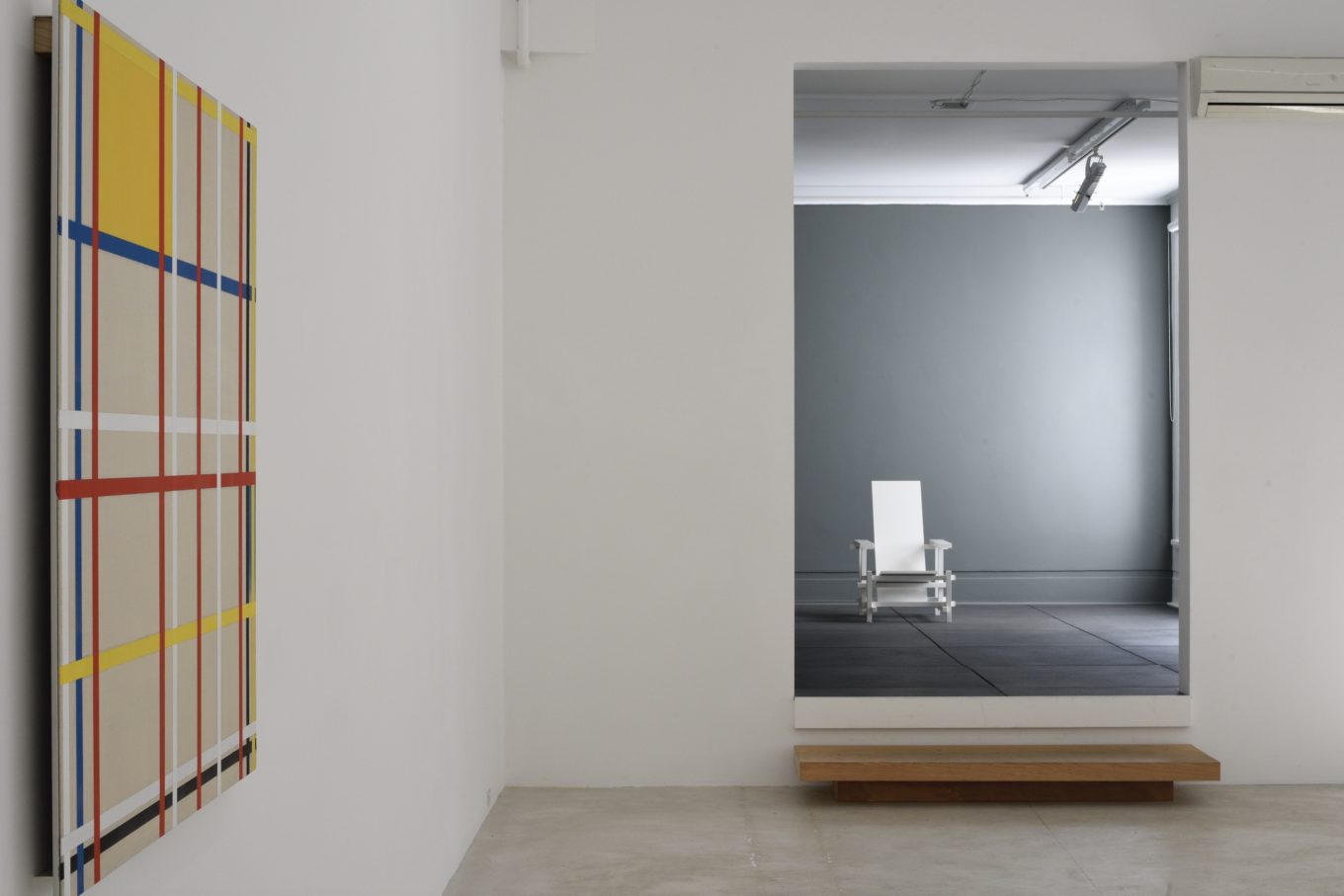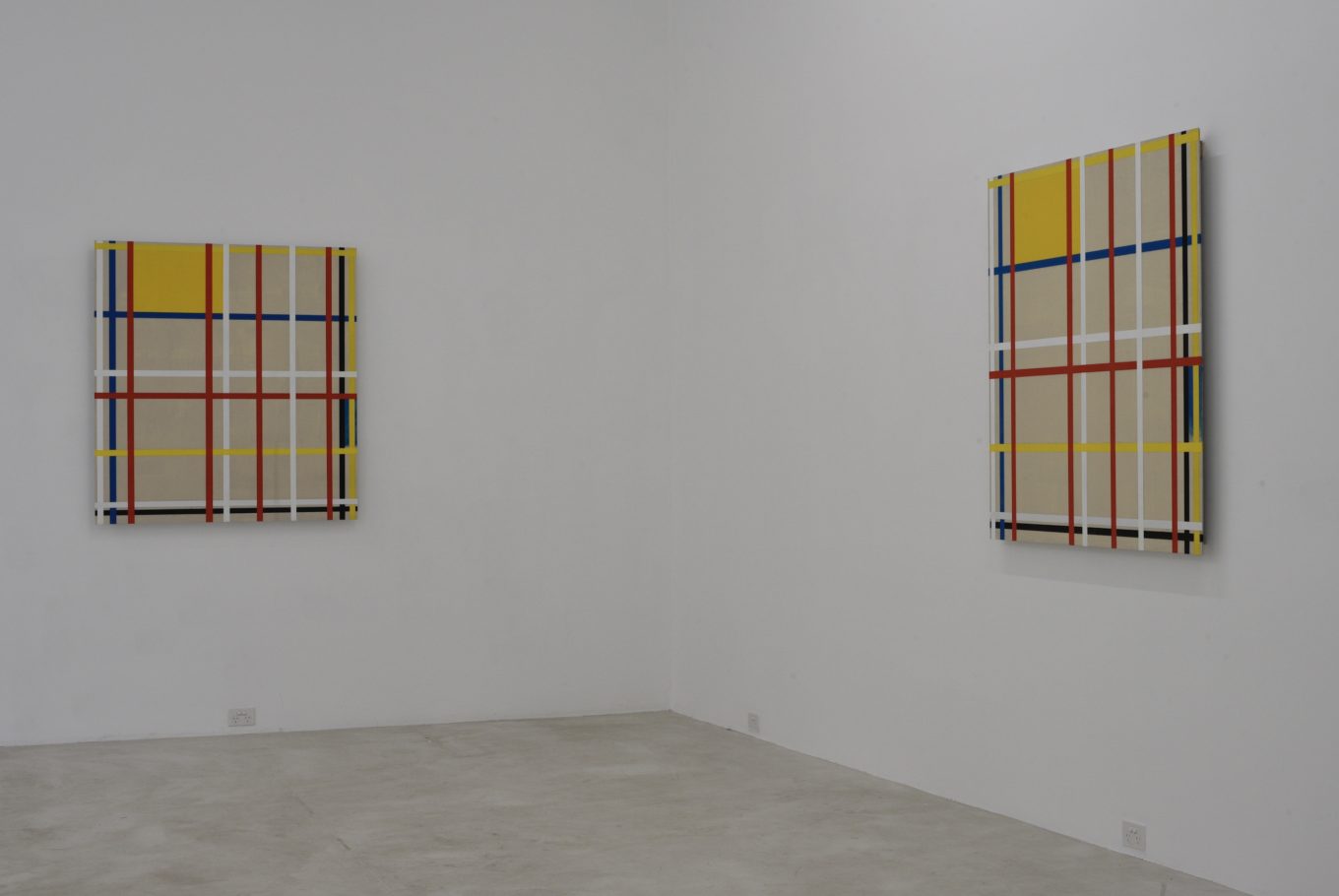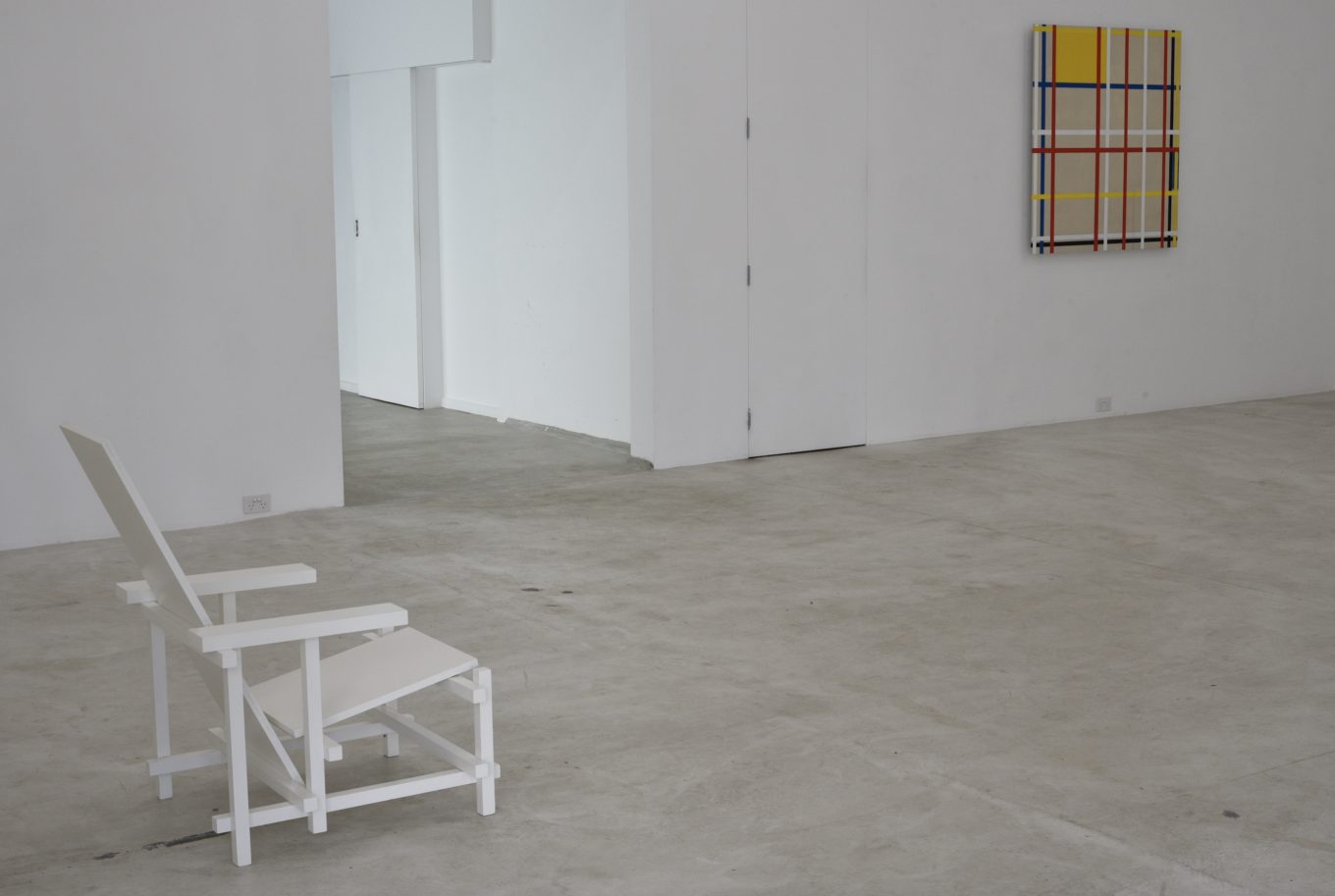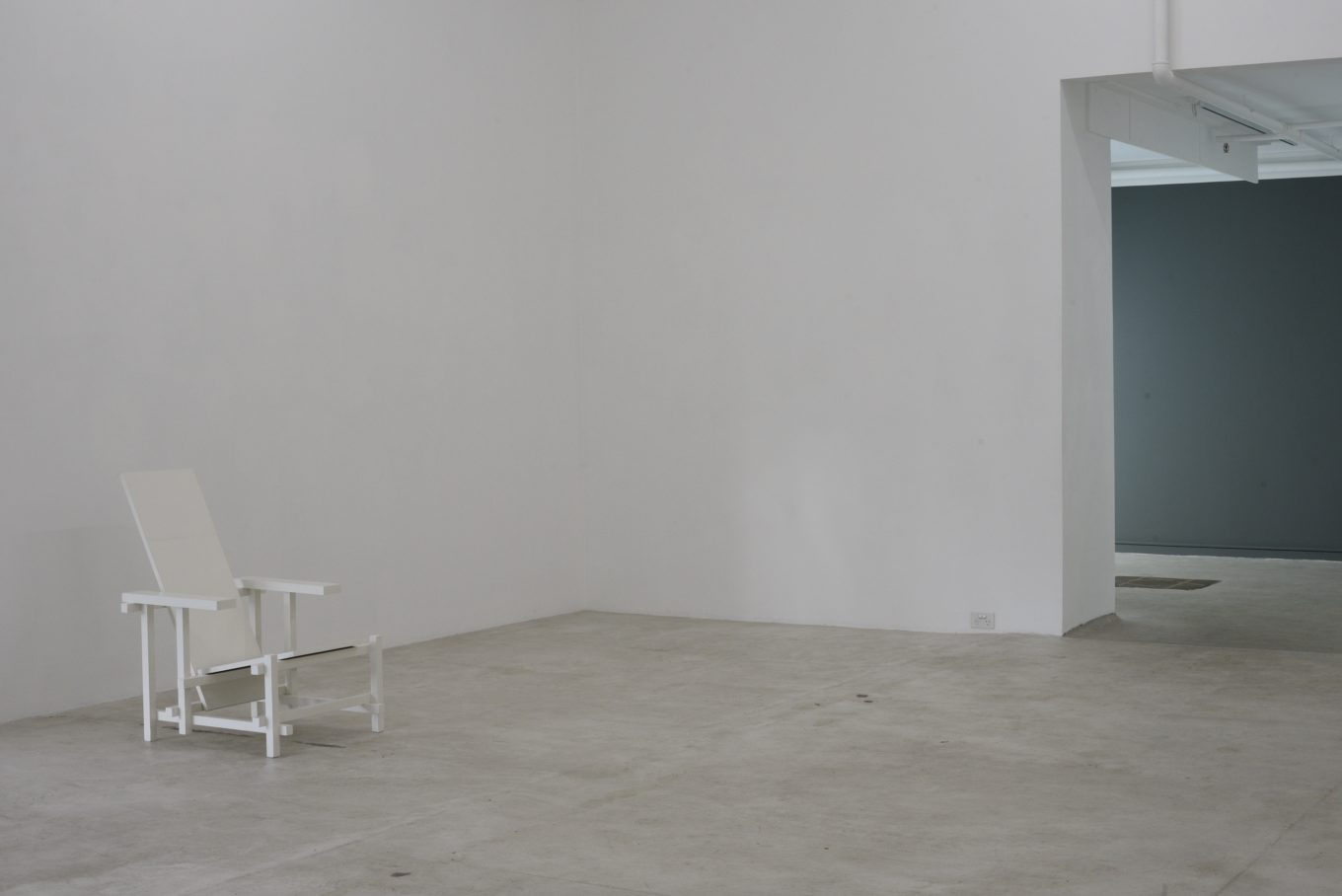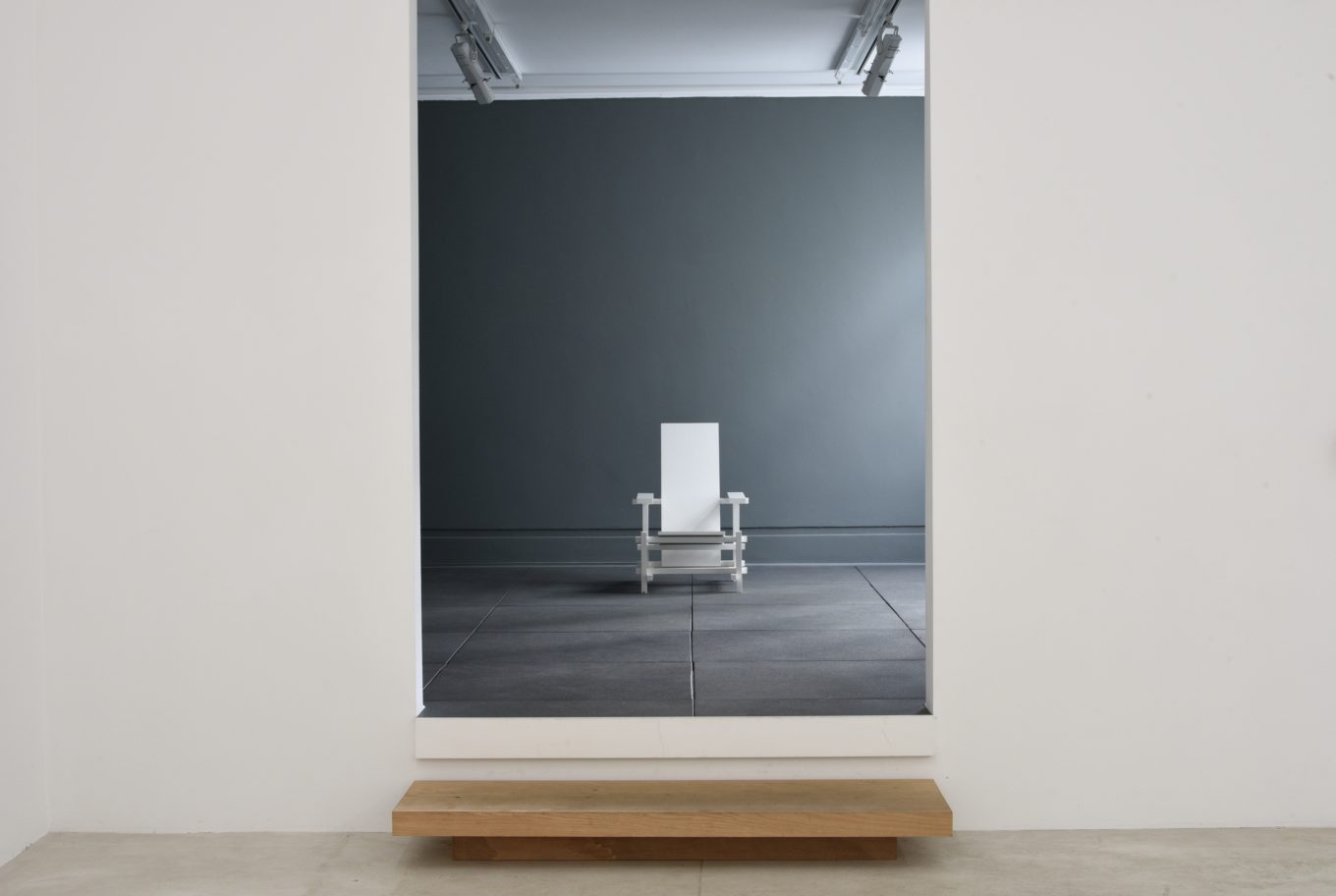“As a pure representation of the human mind, art will express itself in an aesthetically purified, that is to say, abstract form.” Piet Mondrian
Trish Clark Gallery is pleased to present Twice, an exhibition of selected work by Stephen Bambury and Julian Dashper. Curated by Bambury, Twice reflects on the enduring influence of the historical avant-garde.
European art of the early 20th century was rife with idealism, quests for purity, and visions of utopia. Founded in Leiden in 1917, the de Stijl movement was no exception. The movement was largely based around a magazine of the same name and served as a point of affiliation between a number of influential Dutch artists and architects. Significant to this project was the involvement of Piet Mondrian and Gerrit Rietveld.
Restricting pictorial and design language to basic elements of straight lines and primary colours, the de Stijl artists sought to present a ‘true’ vision of reality unhindered by the perception of the natural environment. Mondrian, perhaps the most famous of de Stijl’s adherents, coined the term Neoplasticism to describe this approach – which is often closely associated with his iconic rectilinear paintings. Across the globe, decades later, Neoplasticism’s influence is still evident in the work of a number of artists of the South Pacific.
In many ways Bambury and Dashper make for an unlikely pairing, though the shared influence of Neoplasticism reveals an interrelated dimension within the respective practices of these two important, yet very distinct, New Zealand artists. This exhibition presents responses by Bambury and Dashper to the work of Piet Mondrian and Gerrit Rietveld respectively.
Aside from presenting a new take on the work of two highly consequential New Zealand artists, Twice raises interesting questions around when influence shifts into the realm of Duchampian appropriation.
Stephen Bambury is a widely acclaimed artist, with an extensive exhibition history in New Zealand and internationally. Whilst often exploratory and inventive, his practice has remained centred in abstract painting for the past forty years.
The influence of Julian Dashper’s work has continued to grow since his untimely death in 2009. Examining Modernist themes as they relate to New Zealand culture, Dashper adopted various modes and forms to suit the given enquiry. His work attracted significant international attention, both within his lifetime and posthumously.
Both Bambury and Dashper have succeeded in raising the bar for international achievement and recognition for New Zealand artists. Twice presents an enticing opportunity to see their work in visual and conceptual dialogue.
Text by Julian McKinnon

